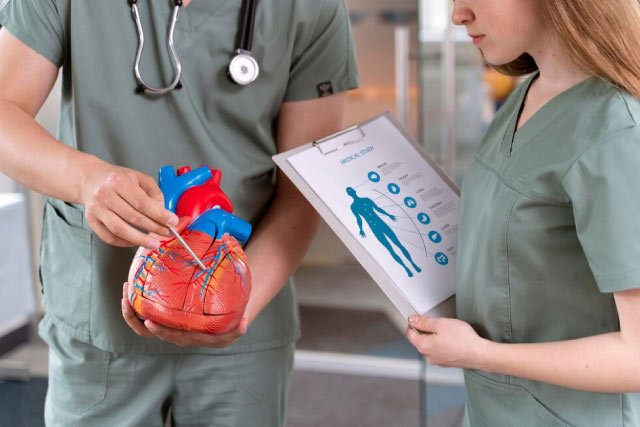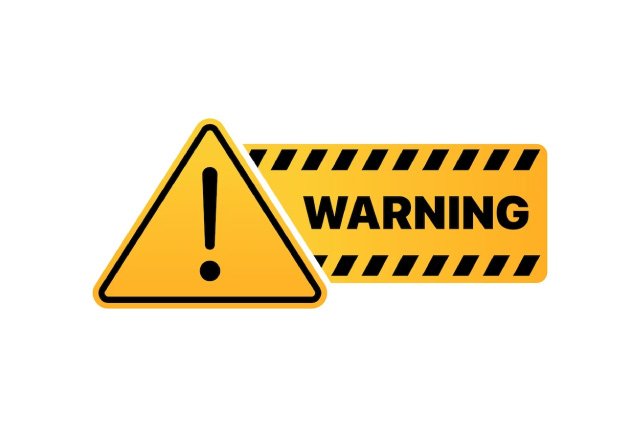
Living with pulmonary hypertension presents its challenges, but with dedicated self-care, individuals can actively manage their health and enhance their quality of life.
1. Understanding Pulmonary Hypertension

1.1. Definition and Causes
Pulmonary hypertension self-care is a complex condition where the blood vessels in the lungs become narrow and constricted, leading to increased pressure. This can result from various factors, including underlying heart or lung diseases, blood clots, or genetic predispositions. It’s crucial to grasp the intricacies of this condition to tailor effective self-care.
1.2. Symptoms and Diagnosis
1.2.1. Common Symptoms:
- Shortness of breath
- Fatigue
- Chest pain
- Swelling in legs and ankles
1.2.2 Diagnosis:
- Medical history review
- Physical examination
- Imaging tests (echocardiogram, CT scan)
- Right heart catheterization
2. The Role of Self-Care

2.1. Lifestyle Changes
- Quit Smoking: Smoking exacerbates pulmonary hypertension. Quitting is a crucial step in self-care.
- Balanced Diet:
- Limit Salt Intake: Reducing sodium helps manage fluid retention.
- Nutrient-rich foods: Fruits, vegetables, and whole grains support overall health.
- Hydration: Adequate hydration is essential to improve wellness. It keeps blood circulation and helps in managing symptoms effectively.
2.2. Medication Adherence
Following prescribed medications is vital for controlling symptoms and preventing the progression of pulmonary hypertension. Medications may include vasodilators, anticoagulants, and diuretics. Adherence ensures optimal therapeutic outcomes.
3. Nutrition for Pulmonary Hypertension

3.1. Importance of a Balanced Diet
- Supporting Overall Health: A balanced diet contributes to the overall well-being of individuals with pulmonary hypertension.
- Nutrient Focus:
- Omega-3 fatty acids found in fish can have anti-inflammatory effects.
- Foods rich in potassium, such as bananas, help counteract the effects of sodium.
- Meal Planning: Consulting with a dietitian for personalized meal plans ensures nutritional needs are met.
3.2. Specific Dietary Recommendations
- Limit Salt Intake: Excessive salt can lead to fluid retention and worsening symptoms.
- Adequate Hydration: Staying hydrated supports circulation and helps manage symptoms.
- Small, Frequent Meals: Eating smaller meals more frequently can prevent overloading the digestive system, reducing the workload on the heart to stay healthy.
4. Exercise and Pulmonary Hypertension

4.1. Tailored Exercise Plans
- Consultation with Healthcare Providers: Before starting any exercise regimen, consult with healthcare providers to ensure safety.
- Low-Impact Activities: Walking, running, swimming, and stationary cycling are suitable exercises.
- Monitoring Exercise Tolerance: Pay attention to how the body responds to exercise. Gradually increase intensity under professional guidance.
4.2. Benefits of Regular Physical Activity
- Improved Cardiovascular Health: Exercise enhances heart and lung function, which is crucial for managing pulmonary hypertension.
- Enhanced Quality of Life: Regular physical activity improves mood, reduces fatigue, and increases overall well-being.
- Social Exercise: Joining group exercises or classes provides physical benefits and emotional support to optimize physical health.
5. Emotional Well-being

5.1. Managing Stress
- Mindfulness and Relaxation Techniques: Meditation and deep breathing can alleviate stress and anxiety.
- Therapeutic Support: Consider professional counseling or therapy to address the emotional challenges associated with chronic conditions.
- Hobbies and Relaxation: Engaging in enjoyable hobbies can be a positive distraction and reduce stress.
5.2. Support Groups and Mental Health
- Joining Support Groups: Connecting with others facing similar challenges provides emotional support.
- Family Involvement: Educate family members about the psychological aspects of pulmonary hypertension to foster understanding and support.
- Online Mental Health Resources: Explore online platforms and resources for mental health support, expanding the network beyond local communities.
6. Sleep Hygiene

6.1. Importance of Quality Sleep
- Establishing a Routine: Consistent sleep patterns improve overall health and wellness.
- Creating a Relaxing Bedtime Routine: Engage in calming activities before bedtime to improve sleep quality.
- Sleep Tracking Apps: Consider using apps to monitor sleep patterns and identify areas for improvement.
6.2. Tips for Better Sleep
- Create a Comfortable Environment: Ensure a dark, quiet, astounding bedroom for optimal sleep.
- Limit Stimulants: Avoid caffeine and electronic devices before bedtime to promote better sleep.
- Consultation with Sleep Specialists: If sleep issues persist, consult specialists for tailored advice.
7. Monitoring and Tracking

7.1. Regular Check-ups
- Frequency of Check-ups: Follow the recommended schedule for regular check-ups with healthcare providers.
- Monitoring Vital Signs: Keep track of blood pressure, heart rate, and oxygen levels at home if advised by healthcare professionals.
- Health Apps and Devices: Utilizing technology to track health metrics makes sharing information with healthcare providers easier.
7.2. Keeping a Health Journal
- Tracking Symptoms: Maintain a journal to monitor symptoms and identify patterns.
- Medication Records: Record medications, dosages, and any side effects. Share this information with healthcare providers during appointments.
- Symptom Severity Scale: Develop a simple scale to track the severity of symptoms daily, aiding in the early detection of changes.
8. Traveling with Pulmonary Hypertension

8.1. Precautions and Planning
- Consultation with Healthcare Providers: Seek advice on travel suitability and necessary precautions.
- Traveling with Medications: Ensure an adequate supply of medications and carry a list of prescriptions.
- Destination Research: Research medical facilities at the destination and have emergency contacts ready.
8.2. Ensuring a Comfortable Journey
- Avoiding Long Periods of Inactivity: Move around regularly during travel to prevent blood clots.
- Notifying Airline Staff: Inform airline staff about your condition for any necessary accommodations.
- Travel Insurance: Consider comprehensive travel insurance that covers medical emergencies related to pulmonary hypertension.
9. Social Life and Relationships

9.1. Navigating Social Situations
- Communication: Communicate openly about your condition, allowing others to offer support.
- Setting Boundaries: Communicate your needs and limitations to friends and family.
- Educational Gatherings: Organize sessions with friends and family to educate them about pulmonary hypertension, fostering a supportive environment.
9.2. Communicating with Loved Ones
- Educating Family and Friends: Help your loved ones understand pulmonary hypertension to foster a supportive environment.
- Inclusive Activities: Plan activities that accommodate your condition, ensuring participation in social events.
- Counseling for Family: Suggest counseling for family members to cope with the emotional challenges of supporting someone with a chronic condition.
10. Coping with Flare-Ups

10.1. Recognizing Warning Signs
- Common Warning Signs: Increased shortness of breath, chest pain, and sudden fatigue.
- Emergency Contacts: Share emergency contacts with family and friends and educate them on what to do in case of a flare-up.
- Personalized Flare-Up Plan: Develop a detailed plan in consultation with healthcare providers, specifying actions to take during flare-ups.
10.2. Emergency Preparedness
- Creating an Emergency Plan: Plan immediate action in a health emergency.
- Emergency Kit: Prepare a small kit with necessary medications, medical records, and emergency contacts.
- Emergency Drills: Conduct occasional drills with family members to ensure everyone knows the emergency plan.
11. Alternative Therapies

11.1. Complementary Approaches
- Guidance from Healthcare Providers: Consult with healthcare providers before incorporating alternative therapies.
- Holistic Approach: Consider a holistic approach, combining alternative therapies with traditional treatments under professional guidance.
- Trial Periods: Introduce alternative therapies like green therapy gradually, observing their impact on symptoms under the guidance of healthcare providers.
11.2. Mind-Body Techniques
- Yoga and Meditation: Practices like yoga and meditation can reduce stress and improve overall well-being.
- Acupuncture: Some individuals find relief through acupuncture, but its efficacy varies. Consult with healthcare providers before trying.
- Biofeedback: Explore biofeedback techniques to gain better control over physiological responses to stress.
12. Inspiring Stories

12.1. Real-Life Experiences
- Overcoming Challenges: Personal narratives inspire hope and offer practical insights.
- Supportive Communities: Participate in virtual communities for shared experiences and encouragement.
- Celebrities and Advocates: Explore stories of well-known individuals managing pulmonary hypertension to find additional motivation.
- Local Support Groups: Attend local support groups to connect with individuals in your community facing similar challenges.
Conclusion
In conclusion, taking charge of one’s health through pulmonary hypertension self-care is empowering. Individuals can lead fulfilling lives by incorporating lifestyle changes, embracing emotional well-being, and actively managing the condition.
FAQs
What is pulmonary hypertension?
Pulmonary hypertension is characterized by high blood pressure in the lungs, affecting the arteries that transport blood from the heart to the lungs.
How can self-care help manage pulmonary hypertension?
Self-care involves lifestyle changes, medication adherence, and overall health management, contributing to better control and improved quality of life for individuals with pulmonary hypertension.
Are there specific dietary recommendations for pulmonary hypertension?
Individuals with pulmonary hypertension are often advised to limit salt intake, maintain a balanced, nutrient-rich diet, and stay adequately hydrated.
What exercises are suitable for individuals with pulmonary hypertension?
Tailored exercise plans are recommended, including low-impact activities like walking or swimming. However, consulting with healthcare providers before starting any exercise regimen is crucial.
How can emotional well-being impact pulmonary hypertension management?
Managing stress, seeking support, and prioritizing mental health positively influence the overall well-being of individuals with pulmonary hypertension.








